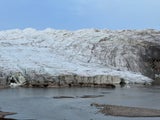Kangerlussuaq
Kangerlussuaq is a unique gateway to Greenland, renowned for its striking landscapes and exceptional opportunities to witness the Northern Lights (Aurora Borealis).
Kangerlussuaq is one of the most accessible towns in Greenland, with a major airport offering regular flights from Denmark and other destinations.
The region is an excellent spot for Aurora viewing due to its stable weather conditions and minimal light pollution. The best time to observe the Northern Lights in Kangerlussuaq is from September to early April. This period provides long nights and optimal chances for clear skies.
A visit to Kangerlussuaq for the Northern Lights is an unforgettable adventure, combining stunning Arctic scenery with the chance to see one of nature’s most magical displays. Whether you’re seeking outdoor excitement or simply want to immerse yourself in the beauty of the North, Kangerlussuaq has something for everyone.
-

Credit: Mads Schmidt Rasmussen
-

Credit: sara nudaveritas
-

Credit: Mads Schmidt Rasmussen
-

Credit: Mads Schmidt Rasmussen
-

How are my chances of seeing the aurora today?
Many factors contribute to your likelihood of viewing the aurora in Kangerlussuaq. Geomagnetic activity, cloud cover and the amount of ambient light all play a big part. Check the forecasts for how good the viewing conditions are today.
10%
There is a 10% chance of seeing the aurora overhead in the Kangerlussuaq area (forecast for 6 November 2025 at 5:01pm UTC)
Kp 2.33
The Kp-index is a scale used to measure geomagnetic activity. It ranges from 0 to 9, with higher values indicating greater geomagnetic activity.
- 0-2 (Very low) Far north, quite dim, and not very active.
- 3-5 (Moderate) Can be seen further south, with increased brightness and activity. Chance of good viewing conditions nearer the pole.
- 6-7 (High) Visible in many northern regions, with vibrant displays.
- 8-9 (Extreme) Widespread visibility, often seen in areas much further south than usual, with intense and colorful displays.
Bz -3 nT
Bz refers to the north-south orientation of the magnetic field embedded in the solar wind. It is measured in nanoteslas (nT).
When Bz is negative (southward), it allows solar wind particles to penetrate the Earth’s magnetic field more easily. A strong negative Bz is often associated with increased chances of seeing the Northern Lights.
Conversely, when Bz is positive (northward), the Earth’s magnetic field tends to block the solar wind, resulting in reduced aurora activity.
Density 3.26 p/cm3
Solar wind density refers to the number of charged particles in a given volume of the solar wind, typically measured in particles per cubic centimeter (p/cm3).
A typical solar wind density is around 2.76 p/cm3.
The density of the solar wind affects how many particles reach the Earth’s magnetosphere. A higher density means more particles are available to interact with the Earth’s magnetic field. When these charged particles collide with the gases in the Earth’s atmosphere, energy is released in the form of light that we see as the aurora.
Speed 540.8 km/s
Solar wind speed refers to the velocity at which charged particles are ejected from the Sun’s outer atmosphere, known as the corona.
A typical solar wind speed is about 375 km/s. When both speed and density are high, the energy transferred to the Earth’s magnetosphere increases, enhancing the chances of seeing vibrant auroras.
Moon
Waning gibbous
Sunrise 9:45am
Sunset 4:27pm
Clouds
1°C Feels like -4°C
- High
- 1°C
- Low
- -13°C
-
Chance of precipitation 0%
-
Cloud cover 82%
-
Easterly winds 2 km/h
Book an amazing adventure in Kangerlussuaq
Explore this selection of tours and activities to make the most of your visit to Kangerlussuaq.
-
Chasing Northern Lights in Nuuk
5.0 (12)
2 hours From £326.76
Chase the dancing Northern Lights and explore every corner of Nuuk city on this 2-hour PRIVATE tour by car! You can join alone or come with a maximum of 4 people! We will drive you to the darkest places in the city for panoramic views of one of the highlights of the Arctic winter. During the tour, your local guide will tell you a little about Nuuk and the Northern Lights, and is always happy to answer your questions about Greenland. It is likely to be chilly. It is the Arctic winter after all! Our car is heated and you can always retreat inside if you get too cold, but make sure you bring heavy outer layers, a woolen hat, scarf, and gloves/mittens so you can stay outside as much as possible. We will also warm you up with a hot chocolate during the tour. Remember Northern lights are unpredictable and may not appear during the tour. If you are unlucky and don't get to see them on the tour, we will rebook you on another night for FREE!
-
Nuuk Greenland Private Guided Tour by Car
4.4 (24)
1 hour 30 minutes From £326.76
If you ever find yourself in the capital of Greenland, Nuuk, and have limited time, but want to see as much as possible, this tour is something for you. We will start the tour by picking you up in our 4x4 car wherever you are located in Nuuk - at your ship, at your accommodation, or at the airport! On this tour, you will see everything from where it all began in the charming colonial harbor to the new different areas and see the historical development of Nuuk city with the new modern buildings. We will stop by the very best photo sights in the town such as "The end of the world", a viewpoint from where you can see the Kook Islands and mount Kingigtorsuaq, North of Nuuk, where you can see parts of the world's second-largest fjord system and look at Nuuk's landmark, Sermitsiaq mountain. You will have the option of stopping by a souvenir shop (within opening hours). If you have any special wishes or places you would like to see, it becomes your very own tailor-made tour.
-
Qaqortoq Cultural Treasures Smartphone Guided GPS Walking Tour
3.4 (10)
1 - 1 hour 30 minutes From £7.61
Tucked along the icy fjords of southern Greenland, Qaqortoq is renowned for its open-air stone carvings, rich Inuit and Norse heritage, and a warm, close-knit community. You'll see the cultural treasures, from bold sculptures and old legends to cozy cafés and stories passed down for generations. Our tour begins right here at the Tenders Pier, your first step into the town. Go at your own pace, anytime, the tour never expires.
-
Private Transfer from Nuuk Airport to Nuuk City Center & Hotels
No reviews
15 - 30 minutes From £100.71
Start your Greenland adventure seamlessly with a private transfer from Nuuk Airport to the bustling city center. Skip the hassle of taxis and public transport as you settle into a comfortable, modern vehicle tailored to your group size. Your friendly English-speaking driver will greet you at arrivals, assist with your luggage, and ensure a smooth journey to your accommodation within 25 minutes. Embrace the charm of Nuuk as you transition from airport to city, ready to explore the culture and beauty that awaits you. - Direct, hassle-free transfer from Nuuk Airport to city center - Comfortable private car or minibus based on group size - English-speaking driver with luggage assistance included - Quick 15 to 30-minute journey ensuring timely arrival
-
Nuuk Legends and History Smartphone Guided GPS Walking Tour
3.6 (13)
1 - 1 hour 30 minutes From £7.61
Nuuk is a place where ancient history and contemporary culture live side by side. Our tour begins at the Katuaq Cultural Center, a striking, wave-shaped building inspired by the northern lights and we’ll finish our walk at Orsiiviup Nuunngua, a scenic spot where you can soak in sweeping views of the fjord and mountains. You'll hear legends, history and stories of the city, and see it's sites. Go at your own pace, anytime. Stop and go as you please. The tour is location aware, GPS, playing as you walk. Keep you phone in your pocket and your head up.
-
Jewels of Nuuk – Private Guided Walking Tour
5.0 (6)
2 hours From £390.45
Skip the crowds this is a private tour for your group only! Planning a trip to Greenland? Looking for Off the Beaten Path Tour? Which are the top sightseeing places in Nuuk? Is Greenland an independent country? The secluded city of Nuuk offers an interesting selection of museums, buildings, and attractions that you must visit once in a lifetime. Which are Nuuk's best attractions? The downtown is just the beginning of the city's charms. The Eskimo town offers you the chance to discover some of the richest examples of Nordic history. Get stunned by the cold streets of Nuuk and its cozy colorful houses. Get ready to experience Greenland from a different perspective. A local charismatic guide will reveal the secrets and interesting facts about the Danish island.
Places to check out around Kangerlussuaq
Discover Restaurants, Cafeterias, Scenic Lookouts and more…
-

CAFETERIA
Cafeteria
-
Ishuset
Ice Cream Parlor
-

Kangerlussuaq Museum
History Museum
-

Muskox Restaurant
Restaurant
-

Roklubben
Seafood Restaurant
-

Russell Glacier
Scenic Lookout
Other places in Greenland
See also
Aurora ForecastPlanning Your Northern Lights AdventureNorthern Lights PhotographyScience Of The AuroraNorthern Lights PlaylistNorthern Lights Myths And Legends

